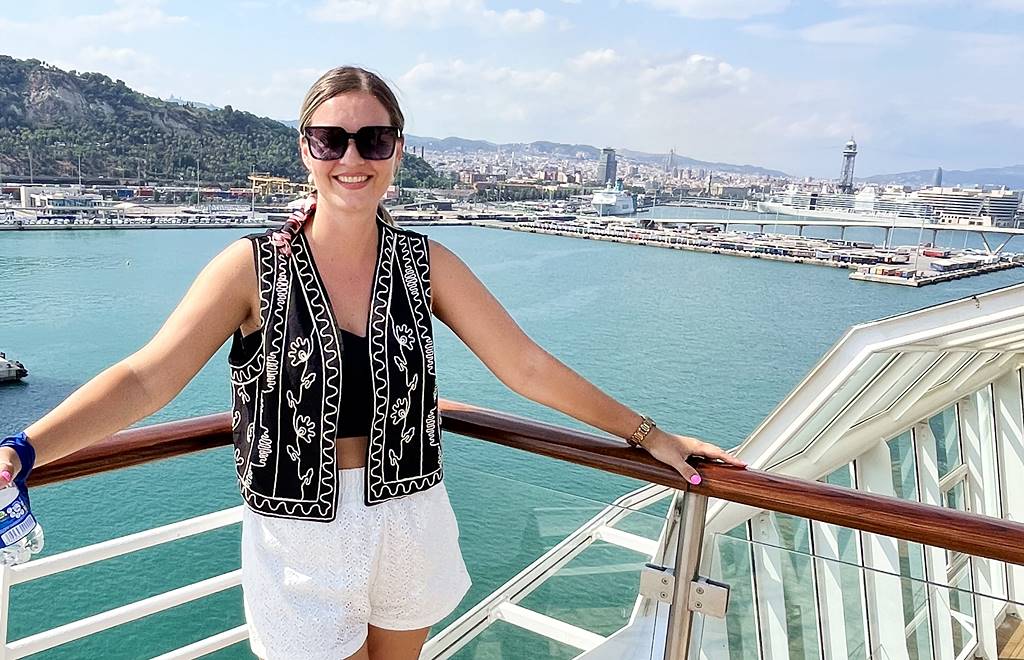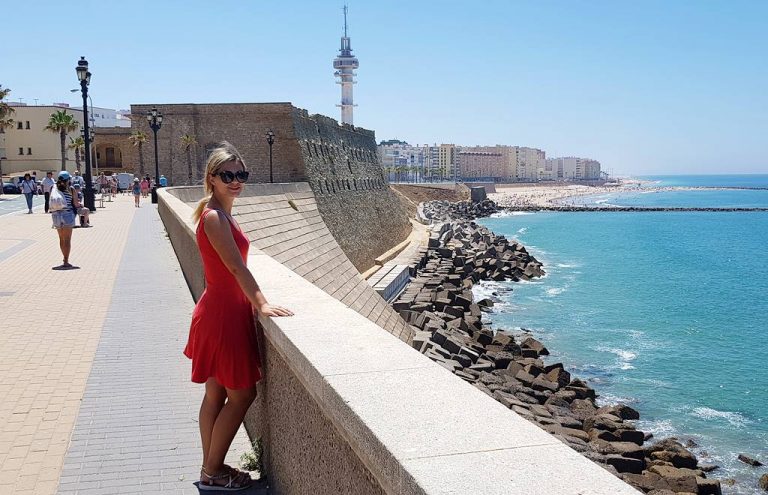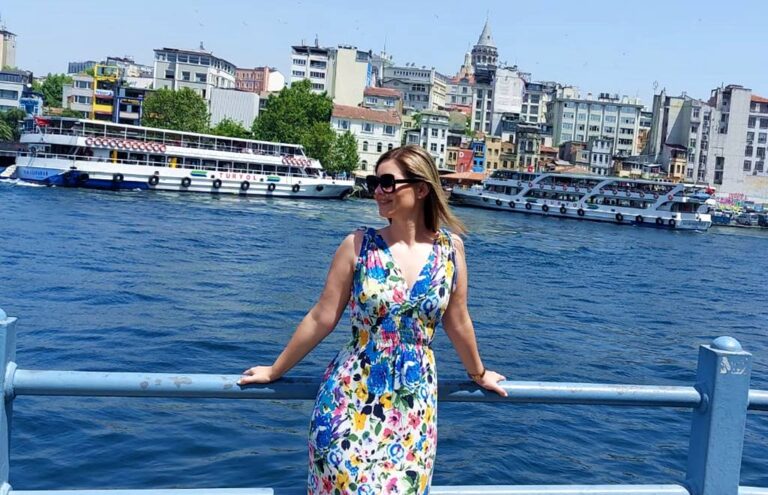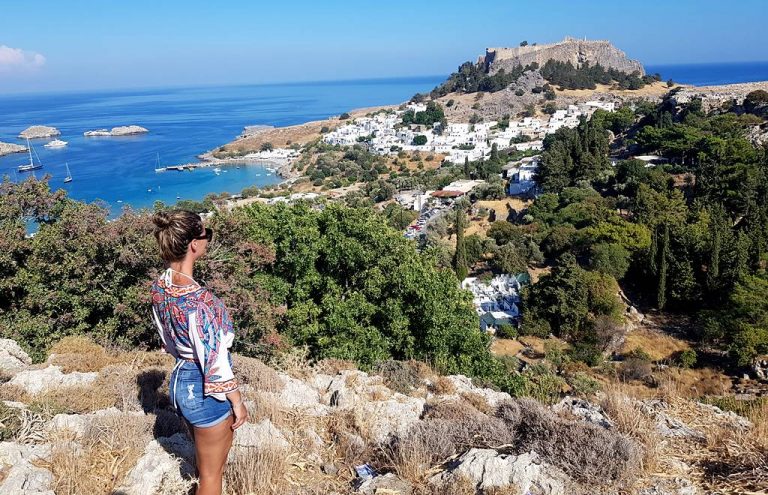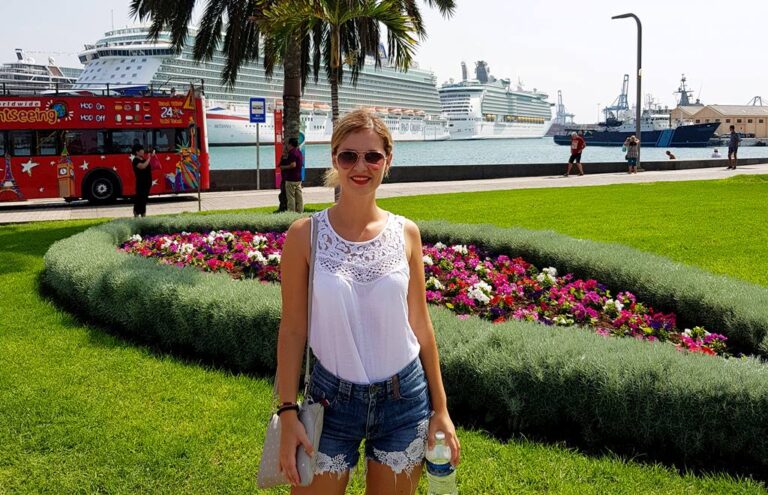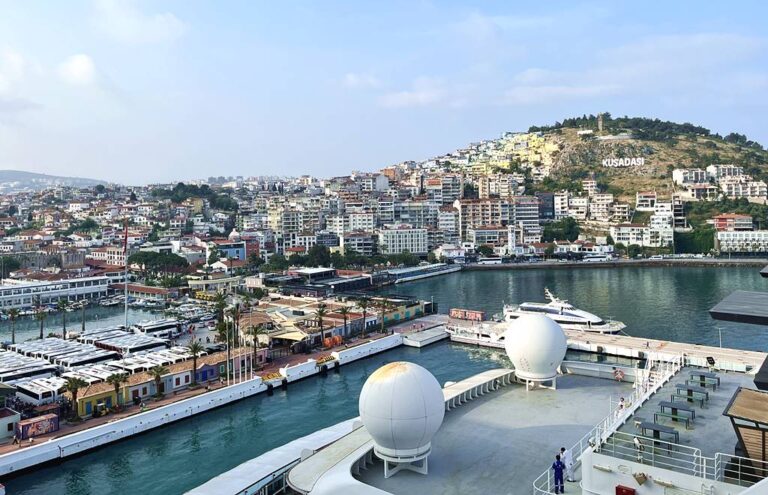Barcelona Itinerary: How to Spend 1–2 Days Before Your Cruise
Some links in this post are affiliate links. If you book through them, I may earn a small commission at no extra cost to you. Thanks for supporting my work!
As an Amazon Associate, I earn from qualifying purchases. Read my full disclosure here.
Although Barcelona isn’t my favorite city in Spain, it’s a place with unique architecture, a lively atmosphere, and a very authentic feel.
It’s definitely worth spending a day or two here, especially if you’re visiting on a cruise.
I’ve been to Barcelona twice by cruise, once as a port of call, and another time I stayed two full days before my cruise, which gave me plenty of time to explore.
In this guide, I’ll share exactly how you can make the most of your time here, whether your ship is docked for just one day or you’ve arrived a couple of days before embarkation. You’ll find:
- Easy ways to travel between the cruise port, airport, and city center
- How to get around once you’re here
- A 1-day Barcelona itinerary for cruise visitors
- A 2-day itinerary for those staying longer
- Extra tips and suggestions on where to stay
It’s everything I wish I had in one place when I first came here, so you can spend less time planning and more time enjoying Barcelona. 🙂
Arriving in Barcelona for a Cruise
Barcelona Cruise Port sits along the city’s waterfront, just south of the Gothic Quarter and La Rambla. It’s one of the busiest cruise ports in Europe and serves as both a homeport and a port of call year-round.
There are two main docking areas:
- World Trade Center (WTC) terminals – Mostly used for smaller and mid-size ships. Located about a 10–15 minute walk from La Rambla and the Gothic Quarter.
- Moll Adossat terminals (A, B, C, D) – Around 3 km from La Rambla. They’re connected to the WTC area by a cruise shuttle bus, which runs regularly and costs €3 for a single ticket. The ride takes 10 minutes.

👉 If you want a full breakdown of each terminal and their facilities, I’ve covered it in detail in my Barcelona Cruise Port Guide.
Prefer video instead? 🎥
Check out my full Barcelona Cruise Port Guide on YouTube — covering top things to do, how to get around the city, and everything you need to know about the port!
✈️ From Barcelona Airport to the City/Port (Homeport Visitors)
If you’re flying in before your cruise, you’ll land at Barcelona El Prat Airport (BCN), about 15 km (9 miles) from both the city center and the cruise port. The ride can take between 15 and 25 minutes, depending on traffic.
I recommend the Aerobus (Airport bus) – I’ve used it myself and it’s quick, comfortable, and easy. The trip to Plaça de Catalunya takes around 35 minutes and costs €7.45 one way (cheaper if you buy a round trip). Check the Aerobus timetables and fares here.
The bus makes several stops in the city, but Plaça de Catalunya is the most convenient, and it’s also the area I suggest for where to stay before your cruise.

Train is another option, although I haven’t used it myself. It’s a budget-friendly service from Terminal 2 (with a free shuttle bus from Terminal 1) that stops at Sants, Passeig de Gràcia, and El Clot-Aragó in the city.
Taxis are available right outside both terminals. The ride to the city center takes about 20–30 minutes, depending on traffic. There’s a flat rate of around €45 for trips between the airport and the cruise port.
For a stress-free start, you can also book a private transfer with Welcome Pickups. A driver will meet you in the arrivals hall and take you directly to your hotel or the port. This is a good option if you have lots of luggage or just want a comfortable, door-to-door service.
Prices are usually similar to taxis, with only a €5–€10 difference, especially if you’re traveling with others and can split the cost.
💡 My Tip: If you’re heading directly to the port and traveling with luggage or in a group, a taxi is definitely the best choice. If you’re flexible and going to your hotel, the Aerobus is great, but if it’s a large group, I’d still consider a taxi/private transfer for convenience and cost-sharing.
🚢 From the Cruise Terminals to the City (Port of Call Visitors)
Barcelona has two main cruise docking areas. World Trade Center (WTC) terminals are mostly used for smaller and mid-size ships and are only about a 10–15 minute walk from La Rambla and the Gothic Quarter.
Moll Adossat terminals (A, B, C, D) are mostly used by large ships and sit about 3 km from La Rambla. They’re connected to the WTC area by a shuttle bus, which runs regularly and costs around €3 for a single ticket.
If your ship docks at the WTC terminals, you can easily walk into the city.
From Moll Adossat, you can take the shuttle bus to WTC and walk from there, or grab a taxi directly to major attractions like Sagrada Família, Park Güell, or Montjuïc.
You can walk from Moll Adossat into the city via the Porta d’Europa bridge, but it’s not the best option if you’re short on time.
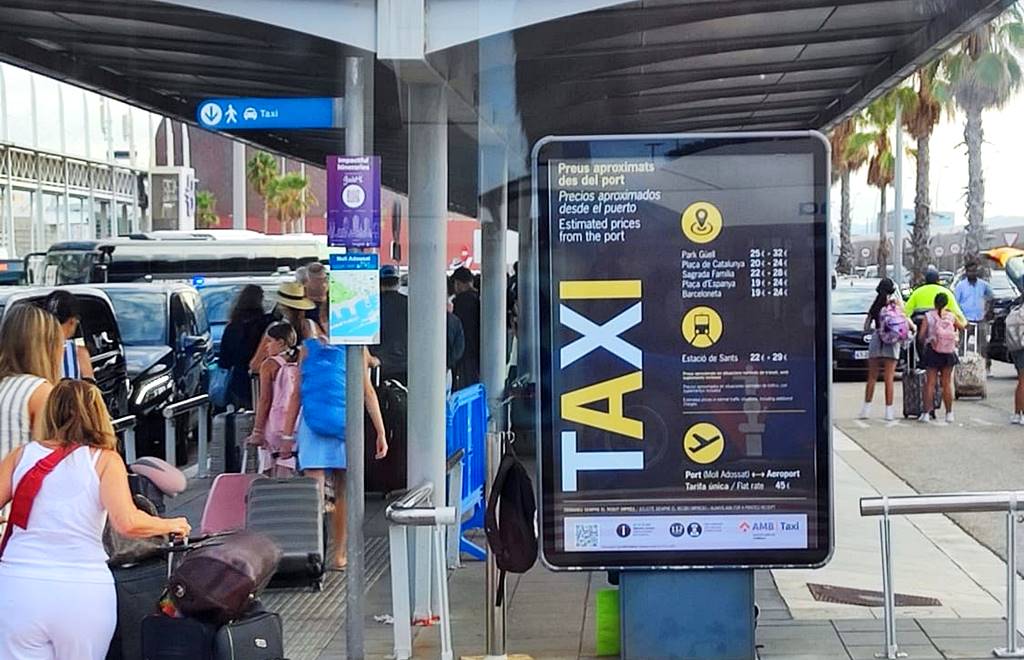
How to Get Around Barcelona
Barcelona is a big city, but it’s well-connected and easy to navigate once you know your options.
Metro – Fast and the easiest way to get between most attractions. A single ticket costs €2.65, but if you plan to use it more than a couple of times, get a T-Casual pass (10 rides) or a Hola Barcelona card (unlimited rides for 2–5 days).
The Hola BCN card can be bought online, at tourist information kiosks, or from ticket machines, and it’s great value if you plan to use public transport multiple times a day. Metro trains run roughly from 5:00 am until midnight, with later hours on weekends.
Buses and trams – Good for reaching areas the metro doesn’t cover. I took the bus from Plaça de Catalunya to Park Güell and found it better than the metro, as it’s a more direct route with no uphill walk at the end.
The only downside is traffic, so the ride can take longer; it took me about 45 minutes from Plaça de Catalunya to Park Güell. The same tickets and passes work for buses, trams, and metro.
Walking – Many central areas like the Gothic Quarter, El Born, and Passeig de Gràcia are best explored on foot. Distances between some attractions can be longer than they look on the map, so wear comfortable shoes.
Taxis & ride apps – Taxis are plentiful and metered. Ride apps like Free Now or Cabify also work well if you prefer booking from your phone. Uber also operates in Barcelona but only with licensed taxis, so prices are the same as a regular cab.
🚢 Getting to the Cruise Port from the City
If you’re staying in the city before your cruise, the easiest way to reach the port is by taxi.
From most central hotels, it’s around €10–€15 to the WTC terminals or about €20–€25 to Moll Adossat. Taxis are especially convenient if you’re traveling with luggage or in a group.
From La Rambla, you can walk to the WTC terminals in about 10–15 minutes.
The cruise shuttle bus connects Moll Adossat and the WTC terminal and costs around €3. So if you need to get to Moll Adossat, just head to the WTC and take the shuttle from there.
You can also grab a taxi directly to Moll Adossat.
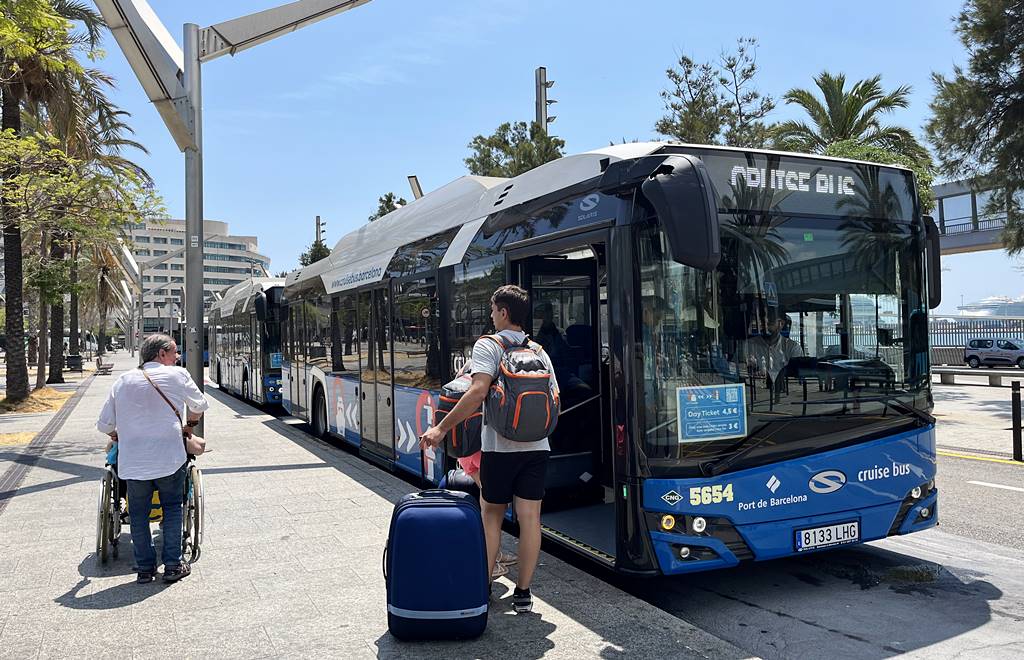
If you prefer public transport, the nearest metro station to the port is Drassanes (Line L3). For example, from Plaça de Catalunya it’s just one ride, getting off at the second stop.
💡 My Tip: On embarkation day, avoid rush-hour metro and bus travel with luggage. Taxis or private transfers are worth it for the comfort and time saved.
1-Day Barcelona Itinerary (Port of Call or Short Stay)
Barcelona is a city packed with sights, so with just one day, it’s all about focusing on the highlights and making smart use of your time.
This itinerary works well if your cruise ship is docked for the day or you’re here just before embarkation.
☀️ Morning – Gaudí’s Masterpieces
Start your day with Sagrada Família, Antoni Gaudí’s most famous (and still unfinished) masterpiece. Construction began in 1882 and continues to this day, funded entirely by visitor donations and ticket sales.
Its intricate facades tell biblical stories in stone, while the interior is filled with soaring columns and colorful stained glass.
Different guided tours are available, and if you have the time, you can even book rooftop access for spectacular city views. Tickets sell out fast, so book online in advance and aim for an early entry time to beat the crowds.
If you’re coming from the cruise port, take metro L3 (Green) from Drassanes station, then switch to either L2 (Purple) or L5 (Blue) to reach Sagrada Família.
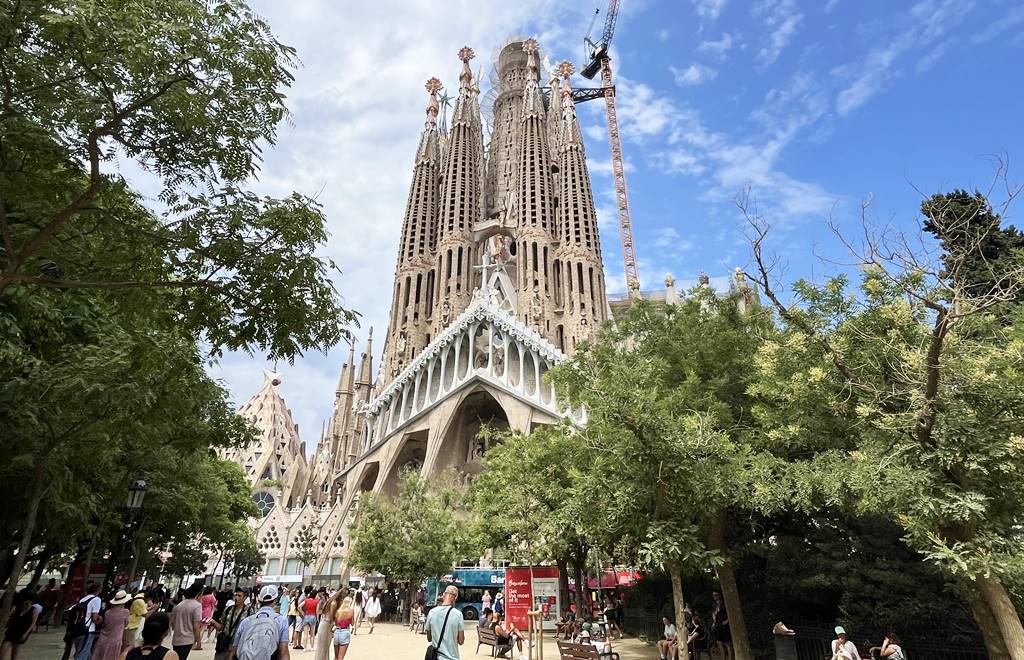
From Sagrada Família, head to Passeig de Gràcia, one of Barcelona’s grandest boulevards. You can either walk (about 20 minutes) or take the metro — L2 (Purple) runs directly to Passeig de Gràcia without changing lines.
Here you’ll find Gaudí’s stunning apartment buildings, Casa Batlló and Casa Milà (La Pedrera), along with other examples of Catalan modernist architecture.
They’re only about 500 meters apart (an 8-minute walk), and even if you don’t go inside, the facades are worth a stop for photos.
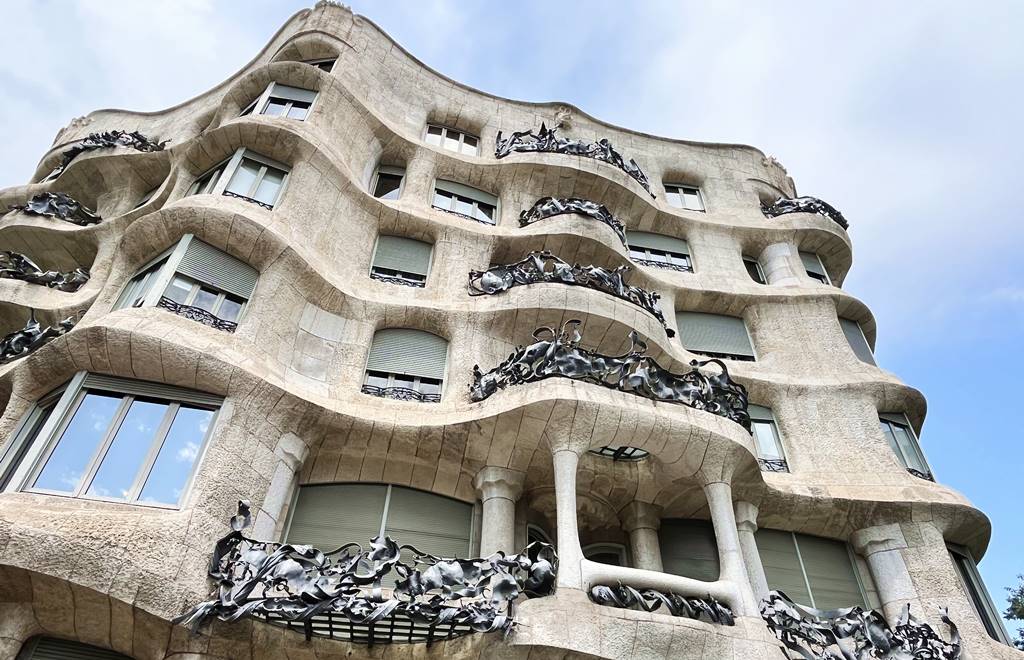
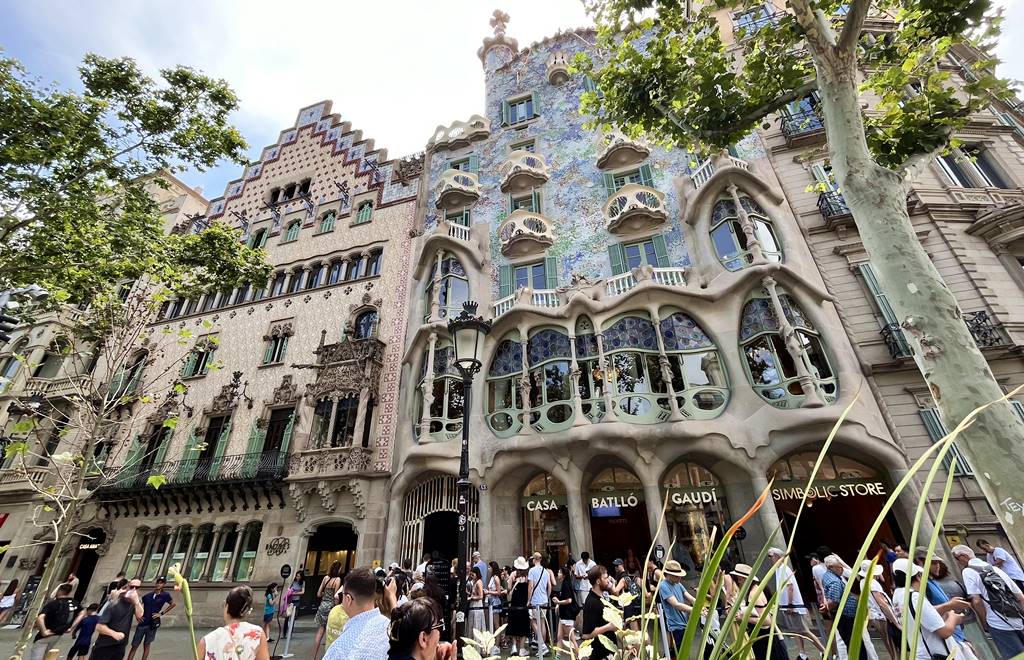
Getting there: From the cruise port, a taxi is the fastest way to Sagrada Família if you’re short on time. From there, Passeig de Gràcia is a short metro ride (direct Line L2) or a 20-minute walk.
💡 Planning to Go Inside?
If you have the time, I highly recommend visiting Sagrada Família from the inside, it’s just as breathtaking as the outside. Allow at least 1.5–2 hours to explore. Booking a skip-the-line ticket or guided tour weeks in advance is essential, as tickets sell out quickly.
In my experience, Casa Batlló feels more popular than La Pedrera, and if you can adjust your plan, it’s well worth going inside (about 1 hour). Check Casa Batlló tickets and tours.
La Pedrera’s rooftop is amazing if you have extra time. Find La Pedrera tickets here.
🍽️ Lunch Near La Pedrera
After exploring Casa Batlló and La Pedrera, it’s a good time to take a break and enjoy lunch.
I ate at Paellería Gaudí, located right next to La Pedrera, and had amazing tapas, grilled calamari with patatas bravas, all at very reasonable prices.
It’s a relaxed spot with both indoor and outdoor seating, perfect for refueling before heading to the Gothic Quarter.
👉 Barcelona has a great food scene, so if you have extra time, you can also browse food tours to combine sightseeing with tasting local specialties.
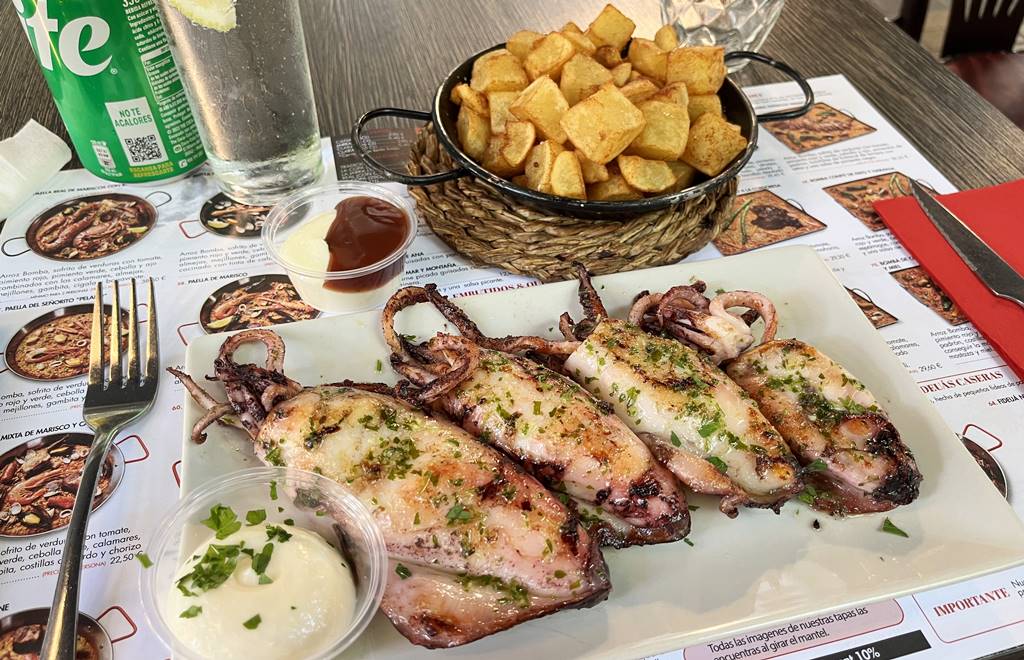
🌆 Afternoon – Gothic Quarter & La Rambla
From Passeig de Gràcia, I suggest walking 15 minutes to Plaça de Catalunya, or taking the L3 (Green) metro to Catalunya station.
Plaça de Catalunya is Barcelona’s main square and a perfect starting point for exploring La Rambla.
It’s also one of the best areas to stay thanks to its excellent transport connections — you can read more in my Where to Stay in Barcelona Before Your Cruise guide.
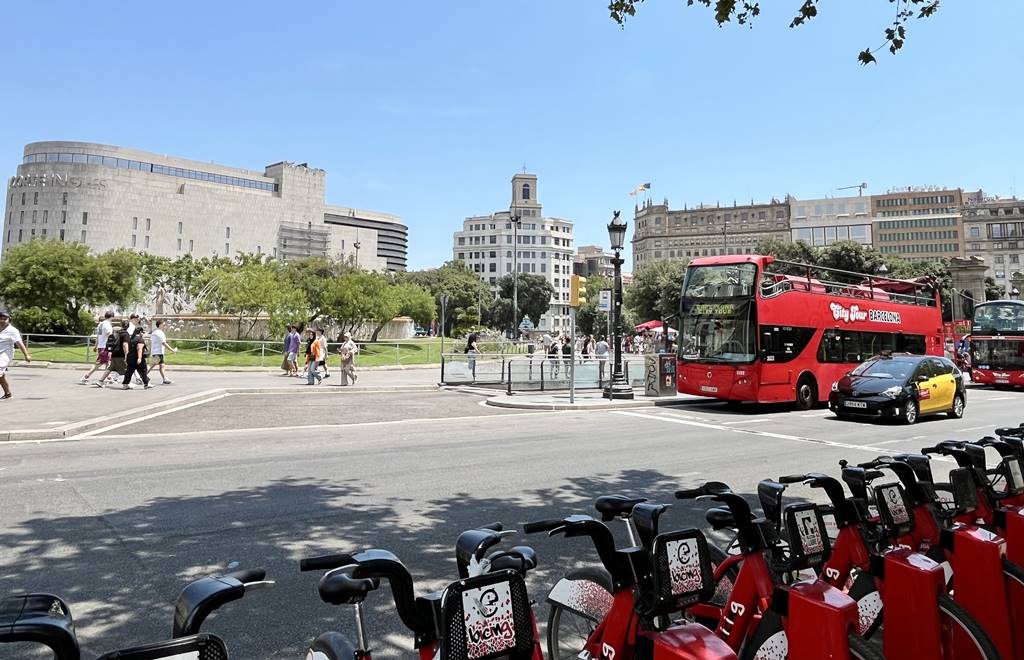
From here, it’s a straight stroll down La Rambla, the city’s most famous pedestrian street. Yes, it’s touristy, but it’s full of energy, street performers, and colorful flower stalls.
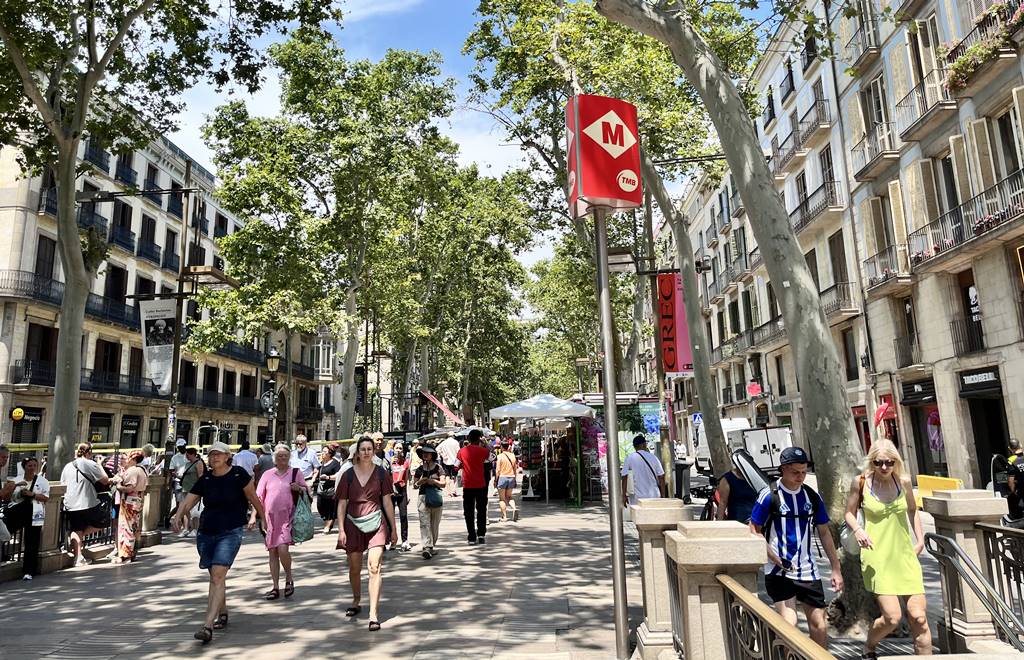
On your way down, make sure to stop at Mercado de La Boqueria, a feast for the senses with vibrant fruit displays, tapas bars, fresh juice stands, and local delicacies.
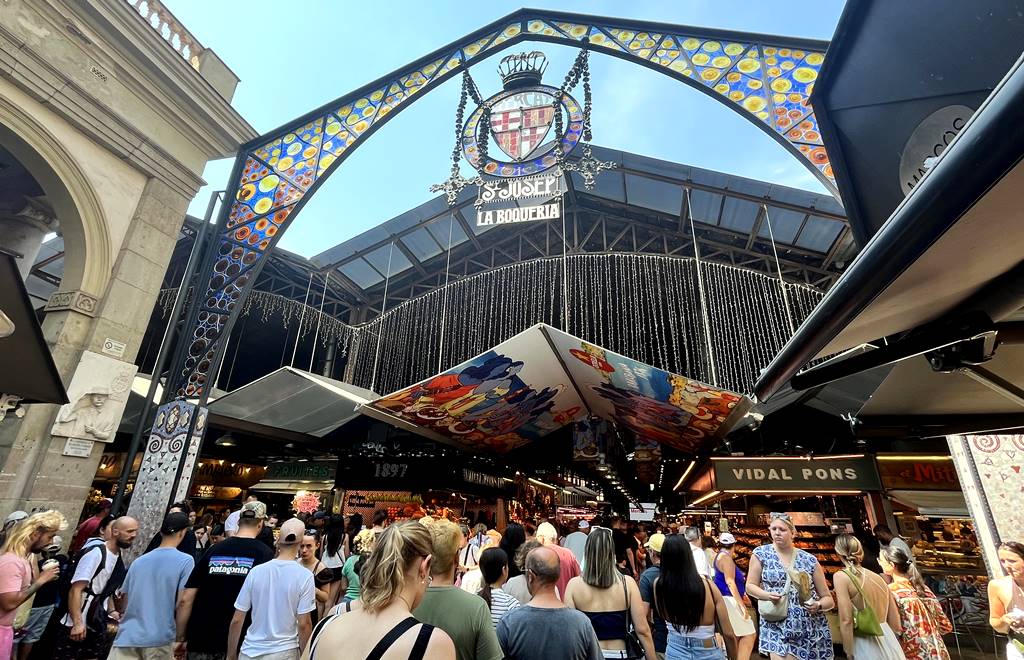
Continue into the Gothic Quarter, where you can wander narrow medieval streets, browse small shops, and admire the impressive Barcelona Cathedral.
Entry is €16 and includes rooftop access, well worth it for the fantastic city and port views. There’s no need to book in advance; I bought my ticket on the spot without any wait.
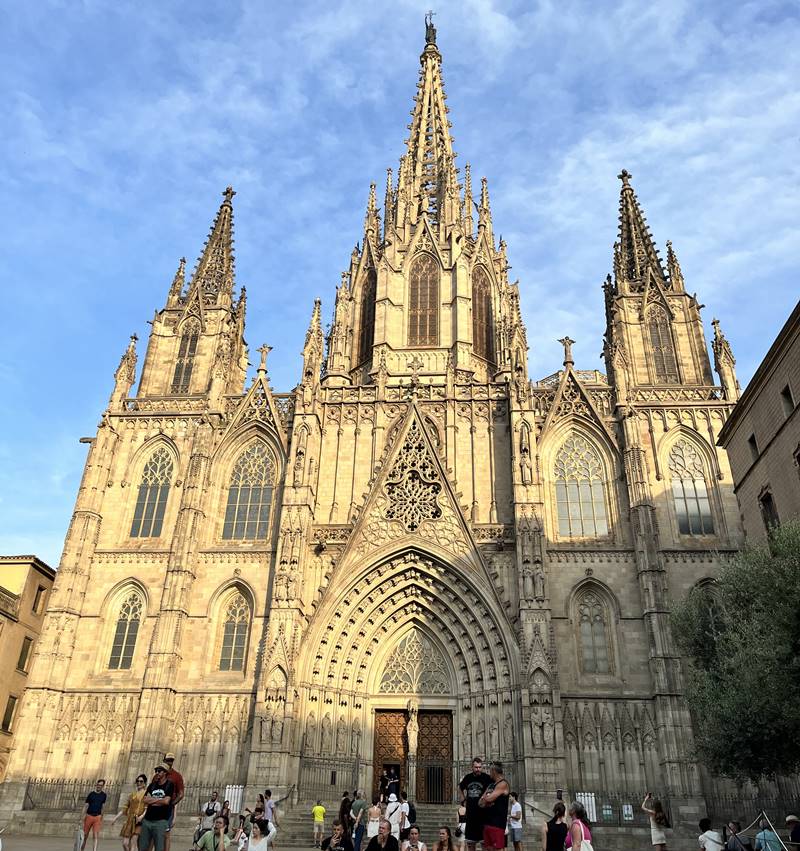
From here, it’s just a short walk to Plaça Reial, a lively palm-lined square surrounded by cafes and restaurants – a nice spot for a coffee or a short break before your evening plans.
From here, you can stroll along Portal de l’Àngel, one of Barcelona’s main shopping streets, before reaching Plaça Reial, a lively palm-lined square surrounded by cafes and restaurants, perfect for tapas, coffee, or a short break before your evening plans.
🌇 Evening – Choose How to End Your Day
After a full day of exploring, you might just want to relax, and in Barcelona, there are great ways to do it. If your ship stays overnight and you still have energy left, you could:
- Watch the Magic Fountain Show at Montjuïc – a colorful display of water, light, and music. Check the schedule in advance, as it doesn’t run every night.
- Enjoy a sunset walk at Barceloneta Beach – the promenade is perfect for a gentle stroll, and you’ll find plenty of seafood restaurants and tapas bars nearby.
- Join a tapas or flamenco experience – a great way to combine dinner with local culture and an authentic Spanish experience. Browse available tours and experiences here.
2-Day Barcelona Itinerary (Pre-Cruise Stay)
If you’re lucky enough to have two full days in Barcelona before your cruise, you can slow down the pace a bit and see more of what makes this city special.
Day 1: Follow the 1-Day Itinerary above.
🌳 Morning – Park Güell & Gràcia
Start your second day at Park Güell, another of Gaudí’s masterpieces and one of the city’s most colorful landmarks.
Originally planned as a private residential project, it’s now a public park filled with whimsical mosaics, winding paths, and panoramic views over Barcelona.
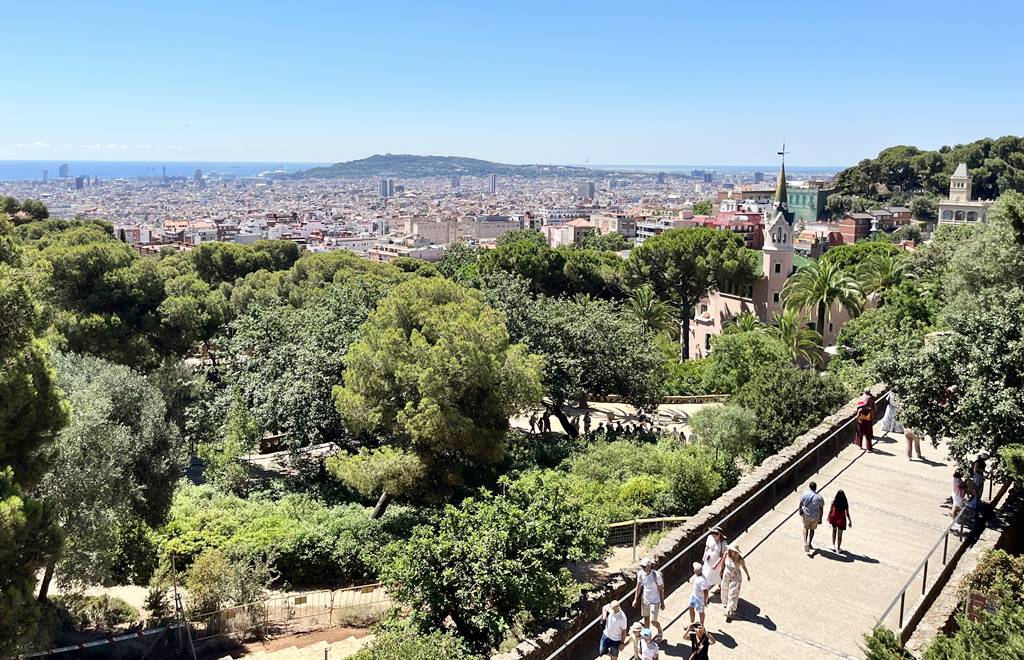
The most popular attractions inside the complex include the colorful mosaic lizard (El Drac), the serpentine bench (the longest in the world at about 110 meters), the columned Hypostyle Room, and the main terrace viewpoint overlooking the city.
You’ll also find the Gaudí House Museum, where Gaudí lived for nearly 20 years, which can be visited for an additional fee.
Tickets must be prebooked, as entry numbers are limited. Plan for 1.5–2 hours here.
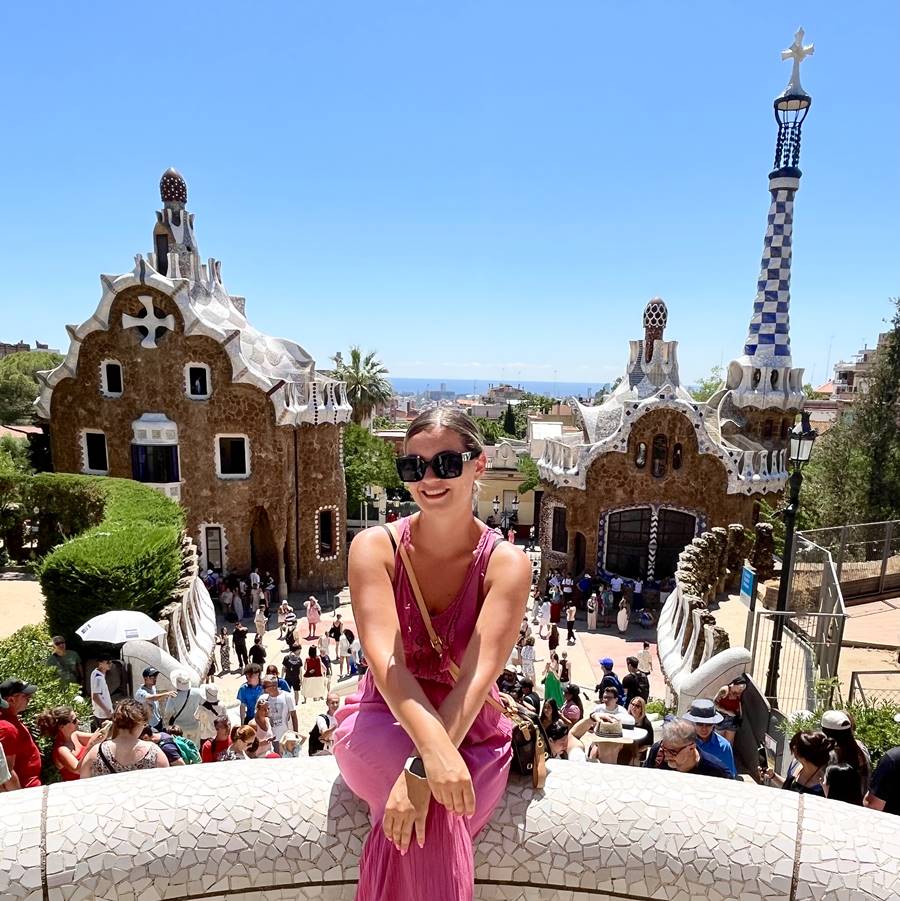
To get to Park Güell from Plaça de Catalunya, take metro L3 (Green) to Lesseps, then walk uphill for about 15 minutes, or take bus 24 (also from Plaça de Catalunya) directly to the park entrance. I took the bus, and while the ride takes about 45 minutes, there’s no uphill walk at the end.
💡 Park Güell is one of Barcelona’s most popular attractions, so tickets must be prebooked. To save time, you can get a skip-the-line ticket or join a guided tour to learn more about Gaudí’s design and the park’s history. See Park Güell ticket and tour options.
From Park Güell, explore the nearby Gràcia neighborhood (not to be confused with Passeig de Gràcia), a charming area with small squares, local cafes, and a more laid-back vibe compared to the busy city center.
🏰 Afternoon – Montjuïc or Beach Time
Montjuïc is a large park and hill overlooking the port, and a visit here can take 2–3 hours or even longer, depending on how much you want to explore.
The park is huge and filled with landmarks such as the Olympic Stadium, the MNAC art museum, the Magic Fountain, and Montjuïc Castle.
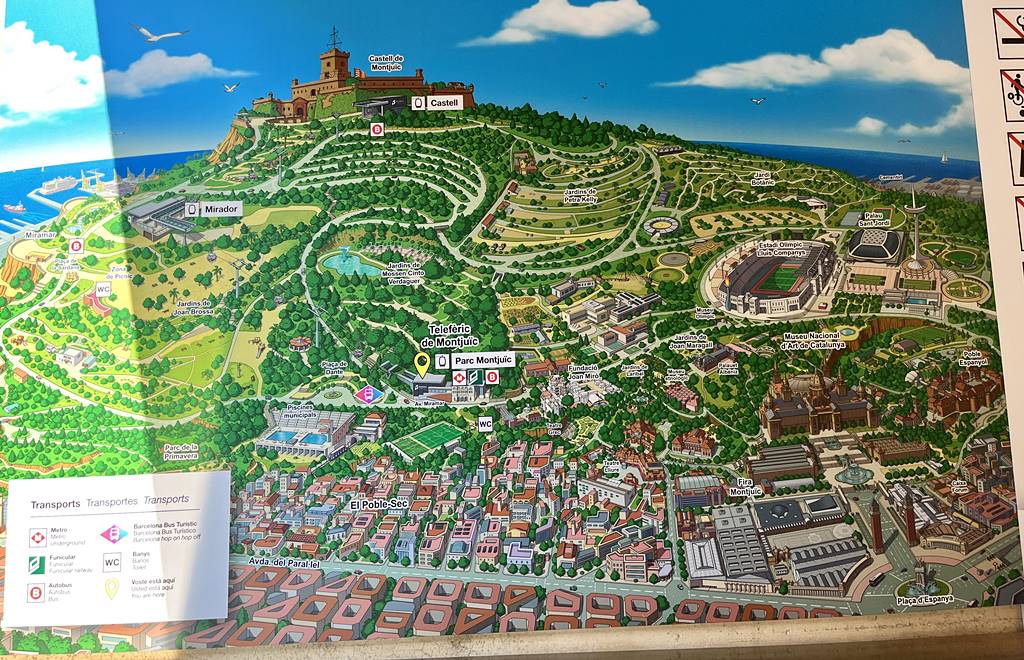
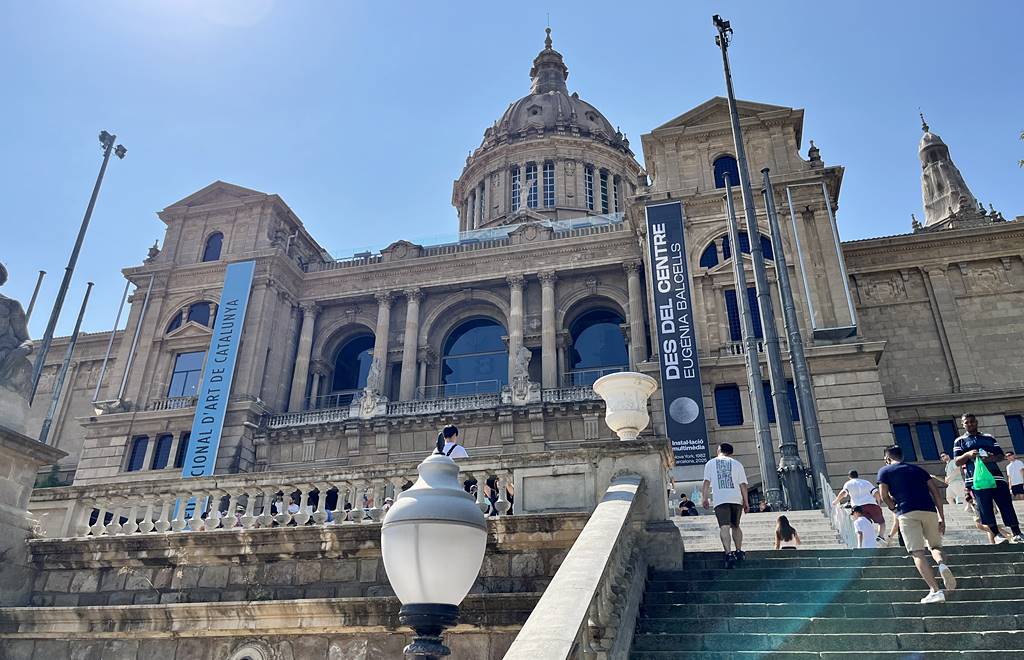
You can get there by taxi, the Hop-On Hop-Off bus, local bus 150 from Plaça d’Espanya, or the funicular from Paral·lel station near La Rambla, which drops you off inside the park.
From there, you can take the Montjuïc cable car up to Montjuïc Castle for sweeping views of the city and port. The castle has a separate entry fee of €12 for adults.
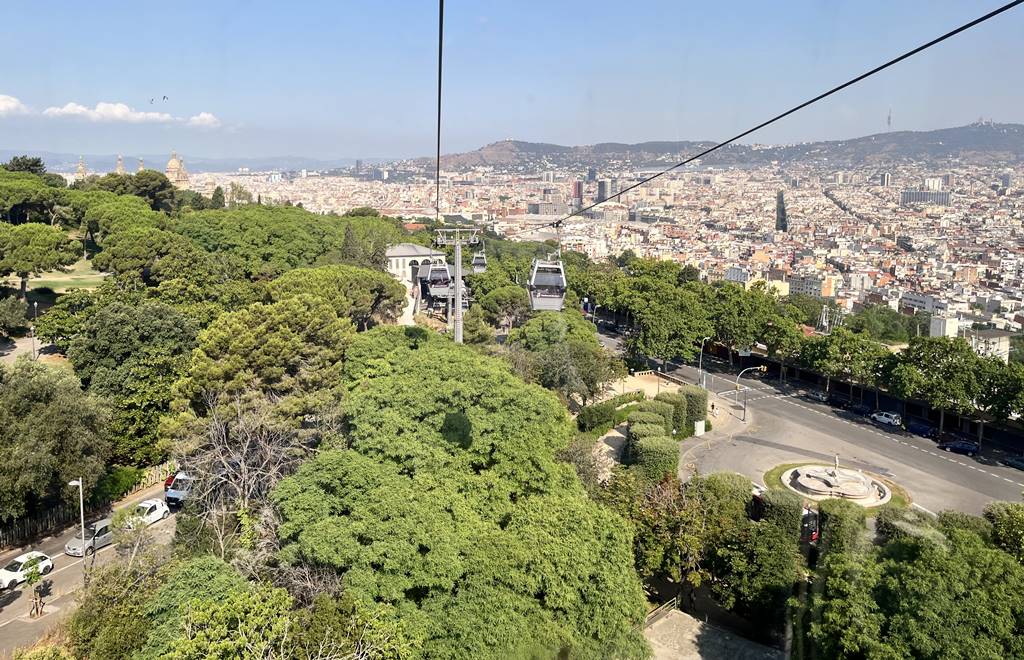
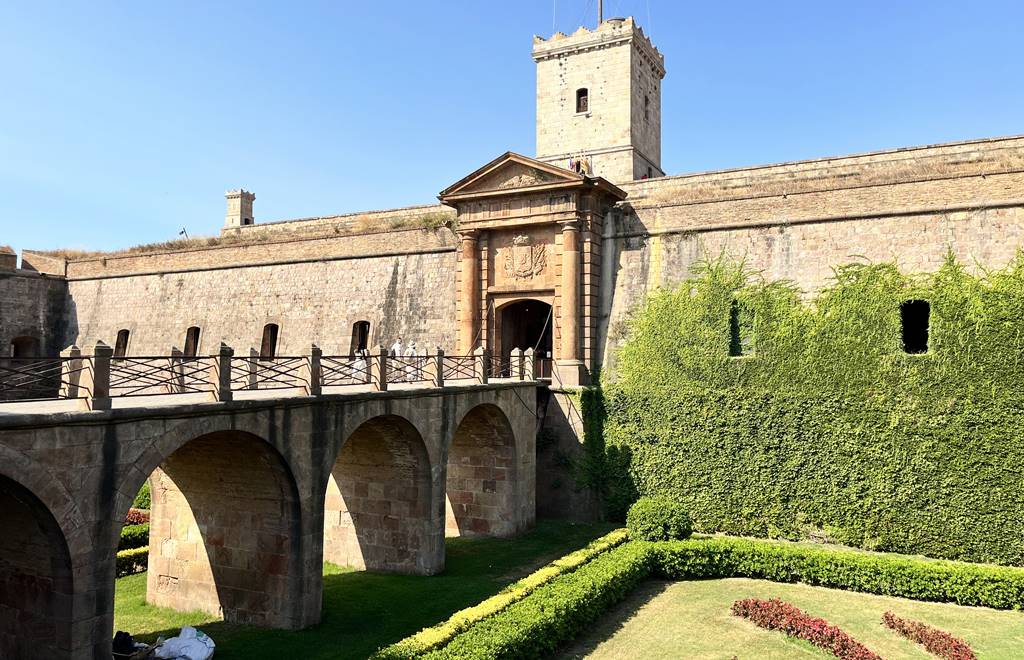
🌿 Montjuïc is full of history, gardens, museums, and incredible city views. If you want to make the most of your visit, consider booking a guided tour or combined ticket that includes the cable car and castle entry.
And, if the weather is very hot or you’ve had your fill of sightseeing, head to Barceloneta Beach, the city’s main stretch of sand, for a relaxing break.
You can walk along the promenade, enjoy seafood or tapas at a beachfront restaurant, and watch the sunset over the Mediterranean.

After visiting Montjuïc, you can spend your evening just like on Day 1 — enjoying tapas, strolling along the beach promenade, or catching the Magic Fountain show if it’s running.
Practical Tips for Visiting Barcelona
- Currency – The euro (€) is the local currency. Cards are widely accepted, but keep some cash for small purchases.
- Language – Both Spanish and Catalan are official; most people in tourist areas speak some English.
- Getting Around – Metro and buses are efficient, and tickets work on all public transport. Buy a T-Casual pass or Hola Barcelona card if you’re staying longer.
- Time Your Visits – Popular sights like Sagrada Família and Park Güell are busiest from late morning to mid-afternoon, so go early if you can.
- Watch Your Belongings – Pickpocketing can happen in busy areas like La Rambla and metro stations; keep bags zipped and valuables close.
- Dining Times – Lunch is usually 1–3 pm, dinner starts around 8–9 pm. Many restaurants close between lunch and dinner.
- Wi-Fi – Free Wi-Fi is available at many public spots, cafés, and even on Barceloneta Beach.
💡 Prepare for Your Cruise – Pack light but smart! Comfortable walking shoes, light layers, sunscreen, and a refillable water bottle are essentials for exploring Barcelona.
👉 Browse cruise travel essentials on Amazon here
Barcelona Cruise Port FAQ
❓ Do I need to book Sagrada Família or Park Güell tickets in advance?
Yes, both require pre-booking for guaranteed entry, especially in summer and on weekends.
❓ Is Uber available in Barcelona?
Yes, but traditional taxis are often faster to find, especially at the cruise port.
❓ How far is the city center from the cruise port?
From Moll Adossat, where large cruise ships usually dock, it’s about 3 km (10 min taxi or €3 Cruise shuttle bus to WTC). The World Trade Center terminal is walkable to La Rambla.
❓ What’s the best way to get from the port to the airport?
Taxi is the fastest and most convenient, especially with luggage. From the cruise port to Barcelona El Prat Airport, the fixed fare is about €45 and the ride takes 15–20 minutes, depending on traffic.
❓ Can I explore Barcelona on foot from the cruise port?
If you’re docked at the WTC (World Trade Center terminal), La Rambla is just a short walk away. If your ship is at Moll Adossat, where most large vessels dock, take the cruise shuttle to WTC first (the ride takes 10 minutes), then either walk to La Rambla or continue by metro or taxi.
❓ What’s the best time to visit Barcelona?
Spring (April–June) and fall (September–October) have pleasant weather and fewer crowds compared to the peak summer season, when humidity can be very high.
Planning a Mediterranean Cruise?
Barcelona never disappoints — whether it’s your first visit or your tenth, there’s always something new to discover. Even with just a day in port, you can easily see some of its most famous sights.
If Barcelona is just one stop on your itinerary, make sure you’re ready for the rest of your trip.
I’ve visited over 40 Mediterranean ports and put together a Mediterranean Cruise Port Guide ebook packed with insider tips, maps, and the best things to do in each port.
You can also check out my guides on Where to Stay in Barcelona and the Barcelona Cruise Port Guide for more travel inspiration.
You may also like our cruise port guides to the Mediterranean, Caribbean, Northern Europe, USA & Canada, Middle East, Australia & New Zealand
Adventour Begins contains affiliate links. If you make a purchase through these links, we may earn a commission at no additional cost to you. For more details, please see our Disclosure Policy


